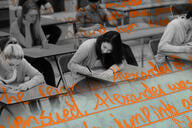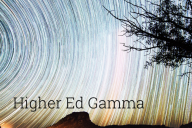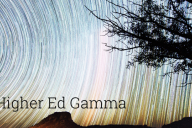You have /5 articles left.
Sign up for a free account or log in.
Perhaps you remember the story of William Miller, the Baptist preacher who predicted that Jesus Christ’s second coming would occur on Oct. 22, 1844. When the advent failed to occur as Miller foretold, many of his followers turned away from the Millerite church in disappointment and disillusionment.
But some did not. In the face of Miller’s failed prophesies, true believers found ways to preserve their earlier beliefs.
Loyalists reinterpreted Miller’s prophesies. Some insisted that Christ had returned to earth spiritually on Oct. 22, marking the beginning of a new age of atonement. Others claimed that the date witnessed the cleansing of the heavenly sanctuary, a precursor to Christ’s second coming.
These ideas helped shape several religious sects, including the Seventh Day Adventist Church and the Baháʼí faith.
We’ve all heard variations of Thomas Huxley’s 1870 phrase “the great tragedy of Science—the slaying of a beautiful hypothesis by an ugly fact.” Facts may indeed be stubborn things, but prior beliefs and ideological commitments often trump facts.
Why do debatable ideas persist even after they’ve been called into doubt?
The social psychologist Leon Festinger’s theory of cognitive dissonance offers a widely cited answer. Just because an idea has been disconfirmed empirically isn’t enough to discredit it. Rather than rejecting the earlier ideas, people find ways to reconcile, excuse, rationalize and modify their prior views in order to reduce the dissonance or tension or contradictions between those previous beliefs and current realities.
In other words, we see what we want to see.
Cognitive dissonance occurs when our predictions, preferences and predilections are disconfirmed. As we will see, we can harness this concept to improve student learning.
Disconfirmation bias—the tendency to uncritically accept evidence that supports our beliefs and actively criticize, refute or discount evidence that challenges that belief—is especially common, I regret to say, in the field of education.
The human tendency to cling to dubious, doubtful or even discredited ideas is as true in higher education as in any other domain.
- Why do students persist in study habits—like cramming or mass practice or reading and rereading a reading passage, instead of active retrieval, spaced repetition or explaining a difficult concept—that turn out to be suboptimal or counterproductive?
- Why do colleges continue to offer remedial courses as the solution to academic unpreparedness, even though educational evidence indicates that such courses are often a black hole?
- Why don’t instructors make greater use of empirically validated best practices, such as frequent quizzing, timely feedback, requiring students to answer “deep” questions and combining verbal and graphical and abstract and concrete representations of concepts and information?
Partly out of ignorance, inertia and intuition. In part, because the status quo seems easier or reflects someone’s self-interest. But also due to confirmation bias, the tendency to search for, favor and interpret information in ways that confirm previously held beliefs and pre-existing practices.
My takeaway: however unnerving, we must always be willing to question the status quo.
Recently, some difficult questions have been raised about a number of widely touted educational innovations.
- Whether test-optional or test-blind admissions are a better or worse indicator of students’ academic ability or potential or achievement than high school transcripts, grade point averages, the titles of courses taken or letters of recommendations or application essays or lists of extracurriculars, and whether or not such approaches will increase admissions transparency and predictability.
- Whether digital learning is comparable to in-person undergraduate learning, and, if so, for which students and in which courses.
Often, of course, the evidence is knotty.
Take the example of math pathways, which offer distinct sequences of math courses for community college students who intend to major in the arts and humanities, the social sciences, or STEM fields and feature pedagogies that emphasize active solving of real-world problems in small groups.
Randomized controlled experiments found that this approach did increase the number of math credits earned but did not result in an increase in the students’ academic progress or degree completion over all. As a result, course content and pedagogies have undergone significant redesign.
If any institutions should be eager to embrace evidence-based practice—replicable rigorous research with verifiable outcomes—it ought to be colleges and universities. Yet all too often high education fails to subject its practices to the same forms of close critical scrutiny that we expect in other domains.
I am convinced that we can leverage the concept of cognitive dissonance to improve student learning.
How so? Here are some strategies you can readily adopt.
- Alert your students to the presumptions, mind-sets and biases that interfere with learning. Students often enter classes with certain presumptions that can negative affect their learning. For example, that they hate history or they’re bad in math or incapable of learning a foreign language or learn best kinesthetically, visually or through lectures or, alternatively, through discussions. Confront these presumptions head-on and explain why they’re wrong.
- Help your students recognize the cognitive distortions that adversely influence our thinking. Too often, we jump to conclusions. Or reason emotionally. Or overgeneralize, exaggerate or discount the positive (or the negative), or embrace overly simplistic dualities. Or refuse to modify an opinion despite evidence to the contrary. Recognizing these distortions is the first step toward overcoming these cognitive predispositions.
- Actively confront confirmation bias, the tendency to cling to preconceived beliefs. Help your students identify their existing presumptions and introduce data, sources, alternate perspectives and other information that challenges those assumptions. Also, help your students to reflect upon their emotional resistance to alternative viewpoints or explanations.
- Challenge your students to think more deeply. Precisely because we tend to reject, dismiss or minimize information that is inconsistent with our pre-existing beliefs, critical thinking is essential. Provide students with various kinds of evidence or sources that can dispel myths, misguided assumptions and erroneous beliefs. Undertake inquiries or investigations that address existing interpretations, beliefs or perceptions.
- Encourage metacognition. Build opportunities for self-reflection into your courses. Nurture mindfulness and self-awareness and strengthen students’ ability to track and evaluate their mastery of course material and adjust their study strategies.
Cognitive dissonance theory rests on the recognition that discomfort, stress and anxiety arise whenever there is a tension or contradiction between pre-existing beliefs and conflicting realities. People often strive to cope with this discomfort through a variety of mechanisms: denial, evasion and various excuses, rationalizations and justifications.
But learning requires discomfort. Clumsiness, awkwardness and embarrassment often accompany the early stages of the learning process. We reveal our ignorance. We make mistakes. We get answers wrong.
Precisely because learning tends to be stressful, emotionally painful and shame-inducing, successful learning requires courage.
It’s our job as teachers to challenge students if we want them to grow and mature cognitively and emotionally. If students aren’t outside their comfort zone, they’re unlikely to actively process information or learn new techniques or internalize a new concept.
To be sure, the need to make students uncomfortable is never an excuse for demeaning, disparaging or patronizing students. Our goal—to foster critical and metacognitive thinking—is to build their analytic and evaluative capacities, not to belittle their inherited opinions or deeply held beliefs.
But do make it clear to your students: complacency undercuts learning, which necessarily requires us to question our presumptions, the conventional wisdom and generally accepted theories and understandings.
Steven Mintz is professor of history at the University of Texas at Austin.



